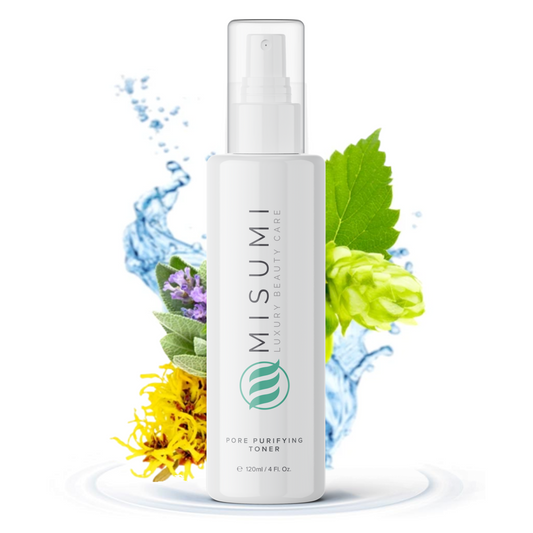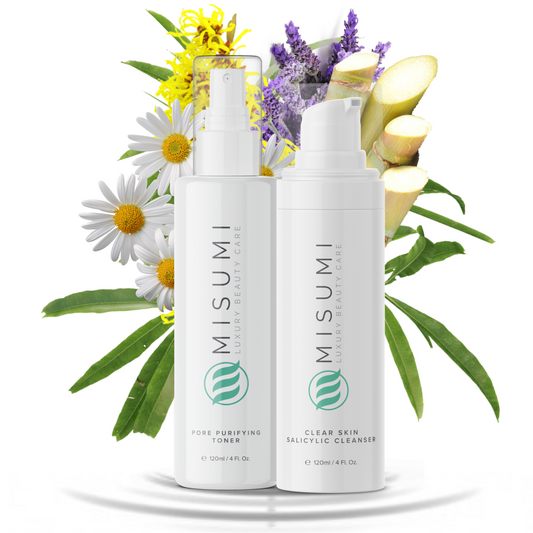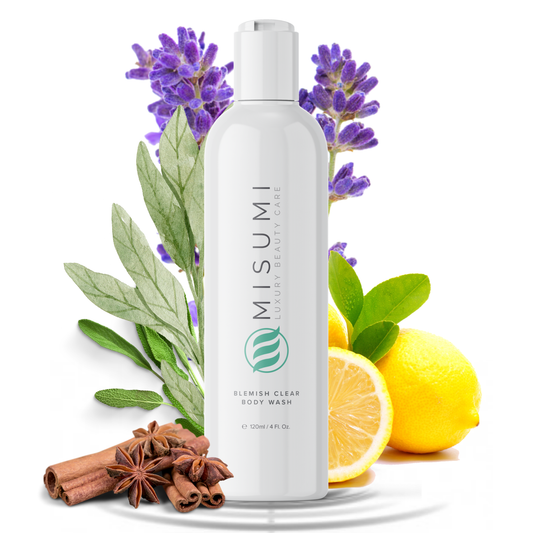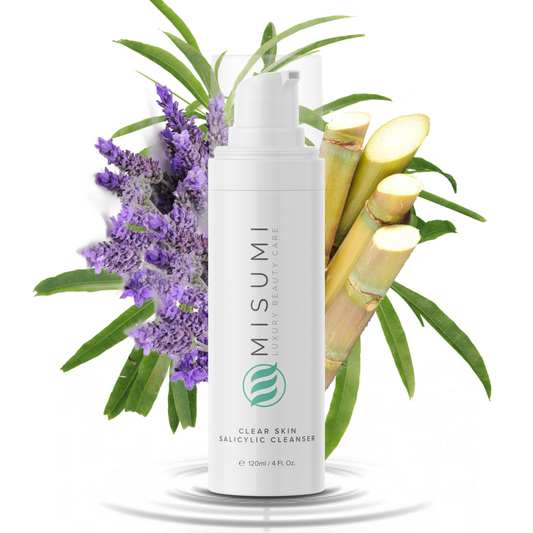Vitamins are important for our overall health. They help our bodies resist infections, protect our nervous system, give us energy, and aid blood flow. The question is: can they also help our skin look healthy and glowing in the long run?
One of the most beneficial vitamins for the skin is niacinamide. In this article, we’ll explore all the niacinamide uses and benefits, how to incorporate it into your skincare routine, and how to choose the best niacinamide products on the market.
What is Niacinamide?
Niacinamide, or nicotinamide, is an active form of vitamin B3 (nicotinic acid). It’s a water-soluble vitamin, meaning it can’t dissolve in oil. This is one of the reasons why niacinamide is commonly found in water-based serums.
Niacinamide has been used for its brightening and skin-enhancing benefits for a long time. Since it’s a stable ingredient not affected by environmental properties such as light and oxidation, it’s easy to use and highly practical.

Its neutral pH makes it an amazing ingredient for other skincare products. A neutral pH denotes that the ingredient is non-acidic, meaning it’s less likely to irritate the skin and cause certain reactions. This is great news for those with sensitive skin.
How Does Niacinamide Work on the Skin?
Our bodies naturally form niacinamide when we eat certain foods high in niacin. When niacin enters the body, it’s converted into active niacinamide.
But don’t worry! You don’t have to purchase any food supplements or eat excessive amounts of mushrooms to notice the benefits of niacinamide. When applied topically, niacinamide penetrates deeply into the skin, allowing us to experience all the wonders of this vitamin without paying for additional supplements.
Niacinamide Benefits
Now that we’ve covered the actual process behind the application of niacinamide, let’s explore all the benefits this ingredient offers and how it can improve skin health.
Niacinamide Improves Pigmentation
Many of us have experienced hyperpigmentation in one form or another. And we can all agree this skin condition is not easy to deal with. There's enough scientific data to conclude that niacinamide can help treat pigmentation, uneven skin tone, and dark spots.
Anti-Aging Benefits
All of us will get wrinkles and fine lines as we age. But what if we can delay this natural process or treat its symptoms?

Regular use of niacinamide will give you a significant improvement in the appearance of fine lines and wrinkles on mature skin - even after as little as four weeks of usage. But what exactly does niacinamide do to provide such astounding results?
Niacinamide increases collagen production. Collagen is a naturally-occurring protein in our skin that does wonders for elasticity and firmness. However, the amount of collagen we produce decreases as we age. It's important to preserve our collagen levels to retain our skin health. An easy way to accomplish that is by adding a niacinamide product into our skin care routine. Using a product with at least 5 percent of niacinamide concentration should provide promising results.
The benefit of using niacinamide for its anti-aging properties as opposed to another product like retinol is that the product you use will also contain a myriad of other benefits. So, by treating fine lines and wrinkles, you’ll also be treating hyperpigmentation since collagen works on that too.
Sebum Regulation

Sebum is the oily substance created by the sebaceous glands that keep our skin and hair moisturized. If you have acne and oily skin, you'll benefit from niacinamide. This is because using niacinamide regularly can have a positive effect on your sebum levels.
In that regard, topical niacinamide works to treat acne like retinol and even oral medication like Accutane without the risk of drying out your skin.
Redness and Rosacea
Many things can cause your skin to become red, like an allergic reaction or a sunburn. Rosacea could also be the underlying cause behind the redness and skin irritation you’re experiencing. Rosacea is a chronic skin disorder that has similar symptoms to adult acne, which is one of the reasons why it’s so often misdiagnosed.
Symptoms of rosacea include:
- Facial redness
- Red lines on the face
- Pimples
- Redness around the nose
- Eye and vision problems
So, how can niacinamide help in this particular case? It’s been proven that niacinamide reduces the amount of redness that patients experience. It reduces red and patchy skin, which is why it’s so commonly prescribed as a treatment for rosacea. This is because it improves the function of the skin barrier, but more on that next.
Niacinamide can Strengthen the Skin Barrier

Many things can weaken healthy skin cells: improper treatment, using harsh products for a prolonged period of time, or skin conditions that remain untreated.
Here are the most common signs of a damaged barrier:
- Red patches of skin
- Irritation and stinging when you apply skincare products
- Skin dehydration and exhaustion
- Skin dryness and tightness
If you’re experiencing some of these symptoms, your skin has probably taken a hit. One of the many ways you can improve the effectiveness of your barrier is by using gentle products and trying out natural skincare.
You can also introduce niacinamide into your regular skin care regimen. Not only is this product effective, but it won’t take a toll on your bank account. Niacinamide will help with symptoms of dehydration, reducing the water loss in your skin. In addition, it increases the moisture in the outermost layer of the skin, which can thicken the barrier and make it less sensitive. You'll end up with beautifully hydrated skin.
Niacinamide Helps with Acne
Acne is extremely hard to deal with. It takes a physical and mental toll on the person suffering. In some cases, genetics play a large part in the appearance of acne. Luckily, we can do something about how our skin responds to acne and help this process.

How does niacinamide come into the picture? Due to its antimicrobial and anti-inflammatory properties, it can treat the skin and prevent acne from forming, especially if you combine it with other acne-fighting ingredients like zinc or sulfur. We'd recommend using this product alongside a great acne-busting skin care routine.
It's a product that will fight against moderate acne, but it isn’t as harsh on the skin as many other treatments.
However, if you have persistent acne, it’s a good idea to visit a dermatologist.
Niacinamide Works Wonders on Dry Skin
If you have dry skin, you know how difficult it can be. You may layer many skincare products on your skin, but your face still feels tight and dry after you’ve finished your skin care routine.

This is when niacinamide comes to the rescue. Applying it regularly can improve the function of the skin barrier. Studies show that using less than five percent niacinamide can decrease water loss in the skin and improve hydration levels.
Improvement in Texture and Pore Size
Shrinking your pores is not an easy task. And so many products claim to help with it, but they rarely achieve the desired effect. But don’t worry; niacinamide is here to help.
Multiple studies have proven that niacinamide minimizes pore appearance and improves skin texture. This, in turn, allows for easier makeup application, even working as a makeup primer.
But how does niacinamide help with pore size? As mentioned, it reduces sebum production. Pores look bigger when filled with excessive sebum and dead skin. This means that the less oil we have, the smaller our pores will look. For this reason, people with oily skin tend to have bigger pores.
Niacinamide Protects from UV Damage

We all know how important sun protection is. Not using sunscreen regularly can lead to many nasty side effects, like premature skin aging and sunspots.
You can avoid these side effects by using niacinamide regularly. It aids in the repair of our DNA that’s suffered some UV damage. And because of its ability to prevent photocarcinogenesis, it’s also a promising tool in the fight against skin cancer.
How to Use Niacinamide
If you want to enjoy all these benefits of niacinamide, it’s important to learn how to implement it into your skincare routine properly.
If you want to achieve the best results, use it in conjunction with other amazing ingredients for the skin. Many niacinamide products already have a cocktail mix of active ingredients that improve skin health. Apply it twice daily on a cleansed face and follow it with a good moisturizer or serum.

Remember, niacinamide can only do so much. Achieving good skin also depends on other lifestyle factors, like a proper, balanced diet full of healthy fats rich in omega-3, vegetables, and fruits, regular exercise, healthy sleeping patterns, and minimized stress levels.
You can also purchase under-eye creams that contain niacinamide. They'll give you the same benefits if applied on the face, except the formula differs for the under-eye area since the skin is much gentler and more fragile. Using it regularly can improve texture, wrinkles, and dark circles, giving you glowing skin in the long run.
Can You Get Niacinamide from Food?
Getting plenty of vitamin B-3 in your system is not difficult, provided that you eat a balanced and healthy diet. If you want to take niacinamide in a supplement form, you can, but you must be diagnosed with a deficiency first.
If you want to increase the amount of B-3 you’re taking in, eat a diet rich in B-3. It can be found in the following food:
- Beans
- Green vegetables
- Eggs
- Cereals

However, the best way to ensure your skin gets the proper benefits from niacinamide is to apply it topically.
When is the Optimal Time to Apply Niacinamide?
There isn’t one correct answer to this question. If you’re using pure solutions, you can apply them twice a day. If, however, you’re using topical niacinamide in a serum, it’s best to follow the instructions. Some serums shouldn’t be applied in the morning, so you’ll want to apply them at night.
How Much Niacinamide Should You Use?
One of the most confusing aspects of niacinamide is choosing the right concentration for your particular skin type. Certain products contain 10% niacinamide, which is widely regarded as the most effective one.
However, in some of the studies we’ve mentioned, the participants used only 4% niacinamide and still had outstanding results. How much you’ll need depends on your end goal, so the amount you should use varies individually.
Always look at how far up in the ingredients list niacinamide appears. If the product contains higher concentrations, it should be close to the top of the list.

Niacinamide Side Effects
We’ve discussed the many skin benefits of incorporating niacinamide into your skincare routine. But are there any side effects from applying niacinamide topically?
According to experts on the subject, niacinamide has no side effects. Experts claim it can be used in high doses without worrying about adverse effects. Topical application is pretty much harmless.
Although it's safe to use, sensitive skin types should do a patch test before applying it all over their face. Simply add a small amount of the ingredient to one area, leave it for a couple of days, and see if there are any adverse reactions. If there aren’t, you're good to go!
Higher concentrations of niacinamide are more likely to bring side effects, so it’s best to stick to 10% or below. If you notice irritation, redness, or stinging sensations after you’ve applied niacinamide, stop using the product and switch to another niacinamide product with a different formula.
Niacinamide supplements are another issue, and it’s best to follow the instructions carefully if you choose to supplement.
Final Thoughts
We can safely conclude that there’s virtually no harm in giving this product a go. Niacinamide has many uses; it’s affordable, easy to find, and even easier to incorporate into your everyday routine. It's suitable for all skin types, from oily to acne-prone skin. And it can even be used to treat acne.
No matter what skin issue you’re currently facing, niacinamide and its benefits can help. Even if you don’t suffer from any skin problems, you can still use it as a preventative measure.
References
The effect of niacinamide on reducing cutaneous pigmentation and suppression of melanosome transfer
How Much Do We Really Know About Our Favorite Cosmeceutical Ingredients?
The effect of 2% niacinamide on facial sebum production
Niacinamide: A B vitamin that improves aging facial skin appearance










